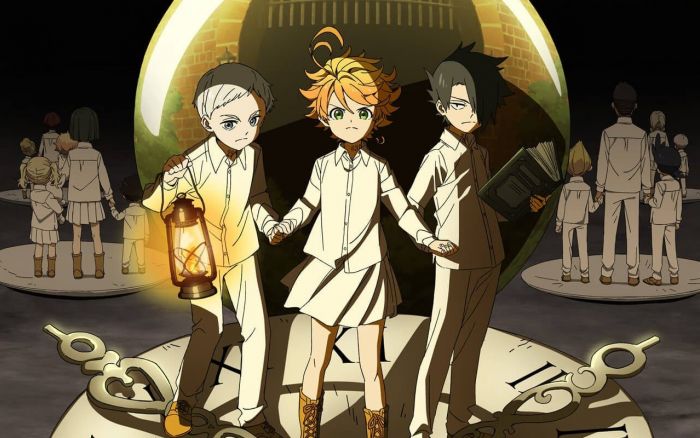Adapting The Promised Neverland from Manga to Anime

I’ve recently begun watching The Promised Neverland anime series, in which a group of children living in a beautiful, bucolic orphanage make a horrifying discovery: their idyllic life is an illusion and they’re actually being raised as food for horrific creatures living in the outside world.
Like many other anime, The Promised Neverland is based on a manga (by Posuka Demizu, to be exact). And Nick Creamer offers a detailed look at how The Promised Neverland has been adapted, and how it compares and contrasts to the manga’s version of the story.
[T]he anime’s layouts tend to be far less extravagantly composed than the manga. They are brutal and intimate, peeking around dark corners, consistently conveying the sense of our heroes being spied on. The “camera” is often set lurking in some strange corner, secretively peering out at the protagonists in both interior and exterior sequences. Instead of conveying the story’s horror through intricately composed visual setpieces, the anime works to foster a consistent sense of entrapment, with the production largely sticking to close shots that would still be possible in a live-action adaptation.
Creamer’s article also touches on the use of digital backgrounds in The Promised Neverland. Digital work in anime has been controversial in anime circles, as some series have become known for astonishingly bad 3DCG. The computer-rendered backgrounds in The Promised Neverland are neither terrible nor fantastic; they’re just sort of there. But Creamer makes an interesting case for why The Promised Neverland’s digital backgrounds make sense:
The show’s focus on intimate, realistic camera work involves a whole lot of sliding pans and jumps between angles, techniques which are naturally facilitated by the show’s convenient, replicable designs.
When adapting a work, choices and sacrifices have to be made in order for that work to exist in the best form possible in its new medium. That’s no different for anime. As Creamer puts it, “At its best, the process of adaptation is far more than ‘converting comic panels into animation’ — it is an act of fundamental reimagining, of reconsidering a story’s base assumptions, and working to tell the best possible version of that story in an entirely new world.”